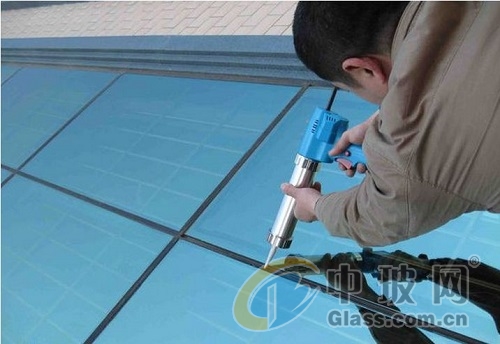[Zhongbo.com] There are three forms of silicone sealant cracking: 1. Cohesive failure, which is characterized by cracking in the middle of the joint. Second, the bond damage, the performance of the crack on both sides of the crack. Third, mixed damage, the performance of the crack in the middle of the crack and cracking on both sides exist at the same time. The reasons for the cohesive failure and bond failure of the sealant are explained below: Cause Analysis: (1) Sealant quality problem 1. With the continuous precipitation of white oil for a long time, it causes the excessive shrinkage, rigidity and loss of displacement of the joint colloid, and it can not adapt to the displacement of the thermal expansion and contraction of the substrate to cause cracking. 2, the characteristics of the 肟 type of glue: resistance to seam displacement cracking ability. 3. The content of cross-linking agent in the formula is small, which is not enough to make the sealant react to form a perfect cross-linked network structure and structural defects, which easily lead to colloid cracking. 4. The sealant is not used within the validity period. (2) Reasons for application 1. The joint design is unreasonable, and the joint width is less than 6mm, which is easy to cause cracking. 2. The formation of a large number of bubbles during the sizing process easily leads to colloid cracking. 3, 肟 type glue is too thin to crack easily. 4. The uneven thickness of the sizing is easy to cause the colloid to crack in a thin place. 5. When the surface temperature of the substrate is too high or too low, the glue will be easily cracked after the glue is cured. 6. The sealant is subjected to external force during the curing process, which easily leads to cracking of the colloid after curing. 7. The large external force or large deformation of the substrate, for example, earthquakes, typhoons, etc., the colloid may crack. 8. When the three-sided bonding phenomenon occurs, the displacement that the sealant can withstand will be limited to within ±15% of the original design displacement, which will easily lead to colloid cracking. (3) Applicability 1. The displacement capacity of the selected sealant cannot meet the joint displacement requirements. 2. The modulus of the selected sealant does not meet the joint requirements. 3, the bond is broken. (4) Applicability issues 1. The method of cleaning the surface of the substrate is improper, and the solvent used for cleaning is not suitable; 2. The surface cleaning of the substrate does not meet the requirements of the sealant application, and the surface of the substrate is not volatilized and dried when the sealant is applied; 3. The primer used is improper or the primer has expired before use; 4. The primer on the surface of the substrate is excessively applied, and the surface of the substrate is not volatilized and dried when the sealant is applied; 5. The sealant in the interface of the sealant is not fully compacted during the application process; 6. The contact area between the sealant and the substrate is too small to ensure the adhesion of the sealant to the substrate (the interface design is unreasonable); 7. The sealant is affected by external influences during the curing process, such as wind load, thermal expansion and contraction of the substrate, etc. 8. The ambient temperature during construction is lower than 5 °C, causing condensation and darkening on the surface of the substrate. (5) Applicability issues 1. The stone curtain wall has not been tested for pollution, and it is impossible to determine whether the sealant will contaminate the substrate; 2. The use of acid glue in metal and stone curtain walls will cause chemical reaction between the glue and the substrate; 3. The bonding of glass and aluminum profiles in the glass curtain wall uses acid glue, and the bonding of the coated glass coating surface using acid glue will lead to the failure of bonding; 4. No compatibility test or adhesion test was performed before the start of construction, and the adhesion of the sealant to the substrate could not be guaranteed. Chemically incompatible assembly accessories (eg, weather strips, spacers, liner strips, fasteners, etc.) and sealant contact will cause the sealant to discolor or cause the sealant and substrate to lose adhesion. (6) Quality issues The displacement capacity, modulus and flexibility of the sealant after curing are not up to the requirements of use.
Shirts are a musthave in any girl`s wardrobe! the shirt is simple and cool and the styling possibilities are endless. a shirt can be worked into every possible outfit, no matter what your personal style is. a shirt can be used for more formal settings as part of a suit, with a blazer and a pair of preppy pants. you can also make it more casual with an oversize shirt with rolled up sleeves over a pair of jeans, or you can wear a printed shirt as part of a more festive outfit for a party or another happy occasion. the shirt can also be that extra detail when you use it underneath a jumper or a sweatshirt and let the collar or bottom peep out.
shirts can be super feminine and girly with floral prints, lace collars or shiny buttons. they can also be minimalistic with a high collar, regular fit and in crisp white cotton material. during the summer you can also use your shirt to cover your shoulders from the sun, and paired with a pair of denim shorts, you have a killer outfit. the past seasons, there has been a rise in the popularity of the overshirt. the overshirt can be an alternative to the cardigan or blazer if you are looking for a more edgy look. Denim Crop Top,Ladies' Check Shirt,Women'S Lace Shirt,Women'S Flannel Shirt Shaoxing Yidie Garment Co.,Ltd , https://www.yidiegarment.com
